News 5/4/11
Top News
McKesson’s Q4 numbers: revenue up 8.6%, EPS $1.62 vs. $1.26, beating earnings expectations by $0.02. Technology solutions sales were up 7%, but the Horizon Enterprise Revenue Management write-down in Q2 hurt the numbers, as did “continued investment in the Horizon product line.” CEO John Hammergren said in the earnings call:
Overall, our Technology Solutions financial results did not meet our expectations as our Horizon product line profitability fell below our anticipated level. It’s important to recognize that this financial performance is not an indication of problems or product functionality … I think that our view is that we’re quite pleased with the progress of the organization, and you know we’ve made many changes in our leadership team there. And frankly, if you go into the organization, we’ve made great progress in our development organizations and our implementation team. So I think we’re doing, frankly, a great job of getting after the issues that we would have faced two or three years ago that are now rapidly behind us. I think from a go-forward perspective, the clinical products are going to be a little less profitable than we had expected primarily because of the work required to make sure that our customers got them installed, got them installed quickly and are getting to Meaningful Use.
![]() From Ms. Blackwell: “Re: golf course fashion. I thought you would appreciate a few pix from yesterday’s GAHIMSS annual golf tournament. The Billian’s HealthDATA team took first place, with a little help from a last-minute recruit from GNAX. Attached are some pix snapped of two guys who were definite standouts in the fashion category, including Mike Mosquito, president and CEO of HealthNovation.” I agree with Ms. Blackwell. There are few things I appreciate more than guys who know how to show some flair at business events.
From Ms. Blackwell: “Re: golf course fashion. I thought you would appreciate a few pix from yesterday’s GAHIMSS annual golf tournament. The Billian’s HealthDATA team took first place, with a little help from a last-minute recruit from GNAX. Attached are some pix snapped of two guys who were definite standouts in the fashion category, including Mike Mosquito, president and CEO of HealthNovation.” I agree with Ms. Blackwell. There are few things I appreciate more than guys who know how to show some flair at business events.
From David StockMan: “Re: Cerner ‘underperform’ rating from Oppenheimer. That particular analyst has been very negative on HCIT stocks since ARRA was passed. He likes to garner attention by being a contrarian, but conveniently changes employers from time to time and re-initiates coverage with a fresh start.” Unverified.
![]() From Sun Myung Sun: “Re: Cerner. I enjoy this blog like something crazy. We’re a Cerner outpatient site looking into getting kiosks for patient check-in, but the insanely high quote from Cerner made that DOA. Do you know of any places that have implement kiosks with Cerner and like them?” Your non-commercial comments are welcome if you have experience to share with SMS.
From Sun Myung Sun: “Re: Cerner. I enjoy this blog like something crazy. We’re a Cerner outpatient site looking into getting kiosks for patient check-in, but the insanely high quote from Cerner made that DOA. Do you know of any places that have implement kiosks with Cerner and like them?” Your non-commercial comments are welcome if you have experience to share with SMS.
![]() From Wikileaks: “Re: nextEMR. They are displaying the CCHIT 2011 logo on their site even though they only achieved ONC-ATCB certification, not comprehension. That’s a clear violation of CCHIT’s trademark and is confusing to providers.” I forwarded your comment to CCHIT and they say you are correct – nextEMR is using the wrong seal and CCHIT has told them it has to come down immediately. They should be using the one on the left, but are using the one on the right.
From Wikileaks: “Re: nextEMR. They are displaying the CCHIT 2011 logo on their site even though they only achieved ONC-ATCB certification, not comprehension. That’s a clear violation of CCHIT’s trademark and is confusing to providers.” I forwarded your comment to CCHIT and they say you are correct – nextEMR is using the wrong seal and CCHIT has told them it has to come down immediately. They should be using the one on the left, but are using the one on the right.
HIStalk Announcements and Requests

Welcome to new HIStalk Gold Sponsor AirStrip Technologies of San Antonio, TX. The company gets a ton of buzz for its cool mobile device apps, which give clinicians real-time access to waveforms, alarms, and patient data from patient monitors and other devices. Its FDA-approved systems include AirStrip OB (maternal/fetal waveforms, annotations, meds, progress notes, etc.); AirStrip CARDIOLOGY (12- and 15-lead waveforms), and AirStrip PATIENT MONITORING (waveforms for cardiac, SPO2, ventilator, arterial lines, plus vital signs, meds, labs results, and other EMR data). Hospitals are finding that plain old remote access pleases some users, but not physicians in high-acuity specialties who want easier and more convenient access to data they need to manage critical patients from anywhere. Benefits include tighter physician alignment and higher satisfaction, quality gains, increased efficiency, and reduced risk. Not to mention that its products always show up in Apple’s commercials and you know docs like cool stuff. I interviewed co-founder Cameron Powell MD just over a year ago. Thanks to AirStrip Technologies for supporting HIStalk.
Here’s a live, Steve Jobs-type AirStrip demo I found on YouTube, which I note earned Cameron Powell spontaneous applause (which seemed to embarrass him a little) when the waveform screen came up on the iPhone.
TPD updated his list of iPhone apps, which I moved to a new page. You can find it here.
Acquisitions, Funding, Business, and Stock

Merge Healthcare posts Q1 numbers: revenue $52.7 million, up from last year’s $20 million. EPS -$0.04, unchanged.
Texas-based EDIS vendor MedHost will move its headquarters to a a larger facility after increasing headcount from 90 to over 130 in the past six months.
Q3 numbers from Mediware: earnings of $1.4 million ($0.17/share) compared to $891,000 ($0.11/share) last year. Revenues were $13.8 million, up from last year’s $12.8 million.
Meditech hired 618 people in the last year, a 20% increase in employees. The company is planning a new 180,000 square-foot facility on a 135-acre tract in Falls River, MA. A former city councilman estimates that the land cost $80-$100 million.
MEDSEEK acquires Third Wave Research Group, a predictive analytics company specializing in healthcare applications.
![]() Precyse Solutions changes its name to just Precyse, along with a new logo and Web address (precyse.com). The company says the new identity is “designed to more accurately reflect the breakthrough technologies and comprehensive and holistic blend of services that are sparking true innovations in the flow of health information throughout the hospital environment, significantly improving the flow of revenue, work and patient data.” As Bard liked to say, “What’s in a name, that which we call a rose.”
Precyse Solutions changes its name to just Precyse, along with a new logo and Web address (precyse.com). The company says the new identity is “designed to more accurately reflect the breakthrough technologies and comprehensive and holistic blend of services that are sparking true innovations in the flow of health information throughout the hospital environment, significantly improving the flow of revenue, work and patient data.” As Bard liked to say, “What’s in a name, that which we call a rose.”
Consulting firm Arcadia Solutions will acquire Concordant, which also provides consulting services.
Sales
eHealthObjects chooses Elsevier/Gold Standard’s Alchemy as its drug database for eHealthObject’s ThinkHIE, ThinkEHR, and ThinkCDM products.
Otto Kaiser Memorial Hospital (TX) picks ChartAccess EHR from Prognosis Health Information Systems. The 25-bed hospital will begin implementation this month.
The 44-bed Tippah County Hospital (MS) purchases Healthland’s EHR.
People
PNC appoints Marlowe Dazley as SVP and senior managing director to lead the company’s new revenue cycle advisory group. He was previously with Premier Consulting Solutions.
HIT consulting firm WPC Services appoints Rebecca Jones (InterComponentWare) VP of sales, Patrick McGrath (MedSolutions) director of technology services, and Larry Watkins (Qaledix) director of business services.
Streamline Health Solutions hires Gabriel Waters (Carefx) as VP of business development.
Former Partners HealthCare CEO James Mongan MD died Tuesday of cancer. He was 69.
Announcements and Implementations

The HealtheConnections HIE in New York says it has connected its first five facilities. Fifteen other community hospitals across Central and Northern New York will eventually join Community General, Crouse, St. Joseph’s and Upstate University hospitals, as well as the Laboratory Alliance of Central New York.
Logansport Memorial Hospital and Woodlawn Hospital (IN) join the Indiana Health Information Exchange.
Singapore goes live on the first phase of its $144 million national EHR system, which will provide a central repository for clinical data collected from different hospitals. Accenture, Oracle, and Orion Health are providing technology.
![]() The folks at Shareable Ink tell us that Gartner has named them one of five cool vendors in healthcare for 2011. Click on the link if you like, but have $20K ready if you want to actually read what’s behind the teaser page. Congratulations also to another HIStalk sponsor, AirStrip Technologies, for making the list, along with AxSys Technology, DisastersNet, and Health Care DataWorks.
The folks at Shareable Ink tell us that Gartner has named them one of five cool vendors in healthcare for 2011. Click on the link if you like, but have $20K ready if you want to actually read what’s behind the teaser page. Congratulations also to another HIStalk sponsor, AirStrip Technologies, for making the list, along with AxSys Technology, DisastersNet, and Health Care DataWorks.
Omnicell announces its G4 platform, which will integrate 11 of its medication and supply automation products onto a single database. New products include a biometrics-capable console with a built-in medication label printer, a redesigned anesthesia workstation, a new controlled substances system, and a system (video above) for delivering meds from the dispensing cabinet to the bedside. The company also announced Q1 numbers: revenue up 5.5%, EPS $0.02 vs. $0.03.
Government and Politics
CMS issues a simplified final rule for credentialing and privileging physicians who provide telemedicine services. Hospitals and critical access facilities can use credentialing and privileging information from the hospital that’s providing telemedicine services instead of making their own privileging decisions for the consulting physicians.
![]() NIST is holding a workshop on EHR usability on Tuesday, June 7 at its Gaithersburg, MD campus. I don’t quite understand the registration page since it says registration closed 6/1/11 (a few weeks from now – maybe it was supposed to say “closes”), there’s no pricing information to allow completing the “amount due” field, and it misspells “usability,” but I’m sure you can work it out with them if you want to attend (it’s not a very usable registration page for a workshop on usability, but that’s just me nitpicking). I didn’t recognize the names of many speakers since most are from NIST, but I did see Charles Friedman from ONC, Arien Malec from Direct, and DrLyle on the list.
NIST is holding a workshop on EHR usability on Tuesday, June 7 at its Gaithersburg, MD campus. I don’t quite understand the registration page since it says registration closed 6/1/11 (a few weeks from now – maybe it was supposed to say “closes”), there’s no pricing information to allow completing the “amount due” field, and it misspells “usability,” but I’m sure you can work it out with them if you want to attend (it’s not a very usable registration page for a workshop on usability, but that’s just me nitpicking). I didn’t recognize the names of many speakers since most are from NIST, but I did see Charles Friedman from ONC, Arien Malec from Direct, and DrLyle on the list.
![]() The two physician founders of a South Florida software company unleash lobbyists and contribute $3 million in one year to state political groups, hoping to kill a bill that would stop doctors from dispensing medications directly to workers compensation patients at markups that far exceed what pharmacies can charge. Automated Healthcare Solutions sells software to support direct physician dispensing to those patients. A state senator drafted a veto-proof bill to kill the practice, but was told by the senate president’s office not to bring it up for a vote. “I’m just doing what I was told,” the senator says, dashing the few remaining hopes that politicians do the right thing and not what someone with money or power tells them.
The two physician founders of a South Florida software company unleash lobbyists and contribute $3 million in one year to state political groups, hoping to kill a bill that would stop doctors from dispensing medications directly to workers compensation patients at markups that far exceed what pharmacies can charge. Automated Healthcare Solutions sells software to support direct physician dispensing to those patients. A state senator drafted a veto-proof bill to kill the practice, but was told by the senate president’s office not to bring it up for a vote. “I’m just doing what I was told,” the senator says, dashing the few remaining hopes that politicians do the right thing and not what someone with money or power tells them.
Technology
HL7 publishes a standard that will allow insurance companies to transfer a patient’s personal health record information among themselves. They call it P2PPPHR – plan to plan personal health record.
![]() Apple acquires a paging system patent that one expert believes will be used for in-hospital iPhone and iPad communication without using cellular networks, reducing power consumption and potential interference in the same way that RIM pagers work. Why does the expert think it’s intended for hospital use? Because they’re the only ones using digital antiques like pagers and fax machines.
Apple acquires a paging system patent that one expert believes will be used for in-hospital iPhone and iPad communication without using cellular networks, reducing power consumption and potential interference in the same way that RIM pagers work. Why does the expert think it’s intended for hospital use? Because they’re the only ones using digital antiques like pagers and fax machines.
Other
HP commits to spending $25 million over the next 10 years to support the expansion of Lucile Packard Children’s Hospital (CA).
The Office for Civil Rights says more than 10 million patients have been affected by 260 data breaches since September 2009.
![]() A special thank you to the reader who saw this desk plate and sent a photo my way. It brightened my day immeasurably.
A special thank you to the reader who saw this desk plate and sent a photo my way. It brightened my day immeasurably.
![]() Weird News Andy, invigorated after his hiatus, provides his penetrating commentary for this story as, “It might be a little deep.” The cause of the bad cough of the former president of South Korea is found to be an acupuncture needle stuck in his lung. WNA also chimes in on an article observing that it’s going to get a lot harder to see a doctor given that Medicare is paying them less while giving more patients insurance, concluding, “When you lower payments without lowering costs, you get less supply. It’s been that way forever even if you don’t understand Econ 101. The most telling part is the average wait times going from 33 to 55 days in the home of Romneycare.”
Weird News Andy, invigorated after his hiatus, provides his penetrating commentary for this story as, “It might be a little deep.” The cause of the bad cough of the former president of South Korea is found to be an acupuncture needle stuck in his lung. WNA also chimes in on an article observing that it’s going to get a lot harder to see a doctor given that Medicare is paying them less while giving more patients insurance, concluding, “When you lower payments without lowering costs, you get less supply. It’s been that way forever even if you don’t understand Econ 101. The most telling part is the average wait times going from 33 to 55 days in the home of Romneycare.”
![]() I can never figure out why supposedly smart companies (especially ones with cool names themselves) give their products names that can’t be pronounced or remembered, seemingly choosing names intended to make everybody in a conference room full of marketing types happy to get a little piece of the final, unmemorable, Frankenstein-like compromise. Case in point: the new mobile results application of Halfpenny Technologies: ITF-GoDoc MobileOE. It looks like someone’s cat was stretching itself on the keyboard. Know a lot of buzzworthy nine-syllable brands, do you?
I can never figure out why supposedly smart companies (especially ones with cool names themselves) give their products names that can’t be pronounced or remembered, seemingly choosing names intended to make everybody in a conference room full of marketing types happy to get a little piece of the final, unmemorable, Frankenstein-like compromise. Case in point: the new mobile results application of Halfpenny Technologies: ITF-GoDoc MobileOE. It looks like someone’s cat was stretching itself on the keyboard. Know a lot of buzzworthy nine-syllable brands, do you?
Sponsor Updates
- Hayes Management Consulting promotes Robert Drewniak to Director of Strategic & Advisory Services.
- The Anesthesia Quality Institute designates Surgical Information Systems as a preferred vendor.
- Karl Graham of CareTech Solutions co-presented with Brett Norgaard of Kinetic Data at the Technology Services World 2011 Silicon Valley conference this week. Their case study was The Intersection of IT Outsourcing and Healthcare: How CareTech Solutions Achieved Top 20 Best in KLAS Awards Distinction.
- Center for Diagnostic Imaging adopts Merge Healthcare’s RIS v.7.0 to meet Meaningful Use certification requirements.
- 3M introduces its Mobile Physician Solution that integrates coding technology to provide advice to physicians as they enter charges.
- Diversified Clinical Services, a provider of wound care management services, to will use Allscripts EHR and PM products as part of its i-heal 2.0 clinical productivity solution.
- Cumberland Consulting Group promotes Memory Baker to executive consultant.
- Nuesoft posts a video called Reworking Workflow to Maximize Revenue.
Contacts
Mr. H, Inga, Dr. Jayne, Dr. Gregg.









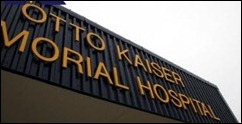




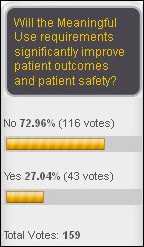
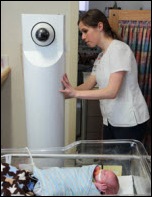
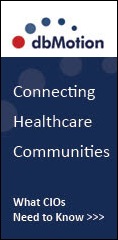

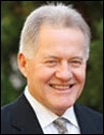

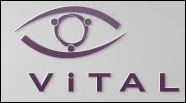
![4-28-2011 9-25-09 AM_thumb[1] 4-28-2011 9-25-09 AM_thumb[1]](http://histalk2.com/wp-content/uploads/2011/04/4-28-2011-9-25-09-AM_thumb1_thumb.jpg)

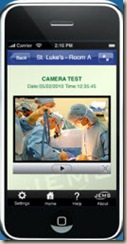
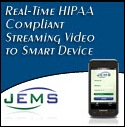

![4-28-2011 1-53-30 PM_thumb[1] 4-28-2011 1-53-30 PM_thumb[1]](http://histalk2.com/wp-content/uploads/2011/04/4-28-2011-1-53-30-PM_thumb1_thumb.jpg)

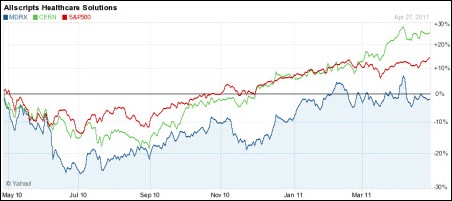
![4-28-2011 4-20-35 PM_thumb[1] 4-28-2011 4-20-35 PM_thumb[1]](http://histalk2.com/wp-content/uploads/2011/04/4-28-2011-4-20-35-PM_thumb1_thumb.jpg)


![4-28-2011 4-15-39 PM_thumb[1] 4-28-2011 4-15-39 PM_thumb[1]](http://histalk2.com/wp-content/uploads/2011/04/4-28-2011-4-15-39-PM_thumb1_thumb.jpg)
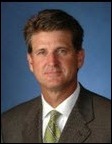
![4-28-2011 4-18-12 PM_thumb[1] 4-28-2011 4-18-12 PM_thumb[1]](http://histalk2.com/wp-content/uploads/2011/04/4-28-2011-4-18-12-PM_thumb1_thumb.jpg)



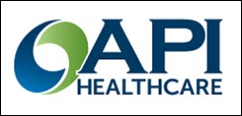

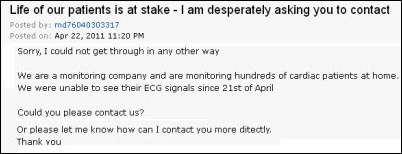


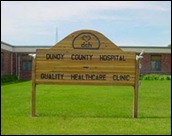

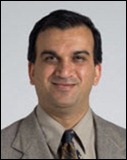






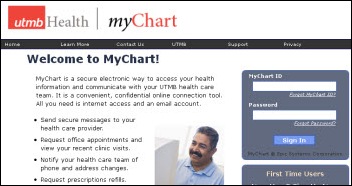
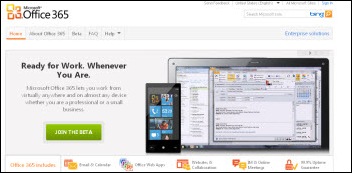

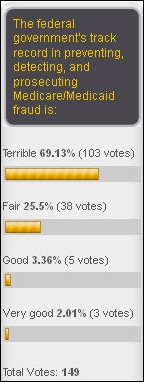

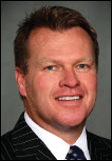

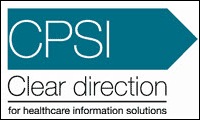
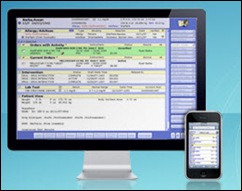
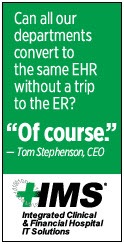







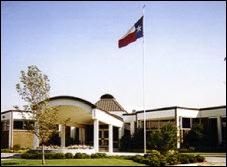
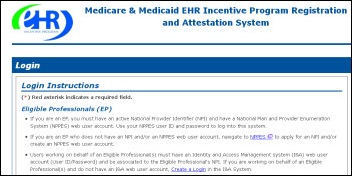


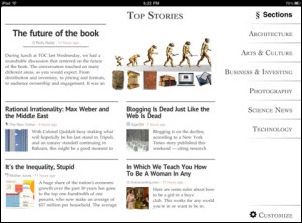



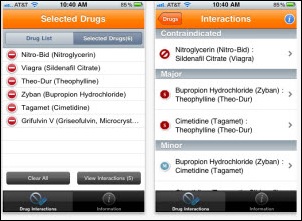

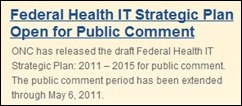




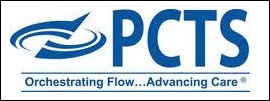

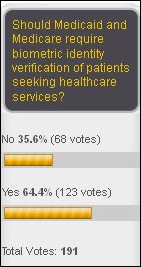



 Healthcare IT is one big reason that private practice docs are taking down their shingles and going to work for hospitals, according to experts
Healthcare IT is one big reason that private practice docs are taking down their shingles and going to work for hospitals, according to experts 

 This week exclusively on HIStalk Practice:
This week exclusively on HIStalk Practice: 






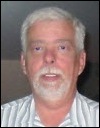

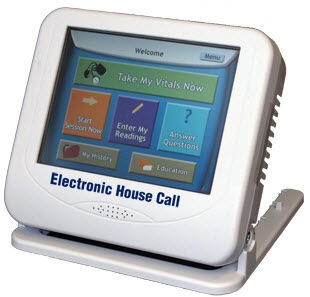
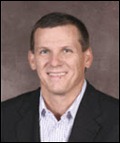







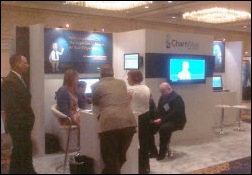


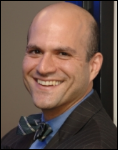
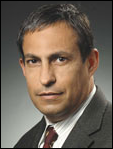
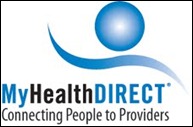
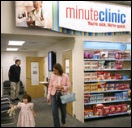





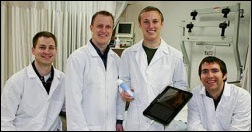
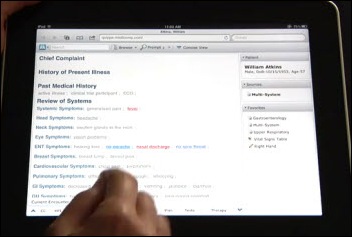

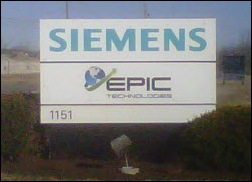


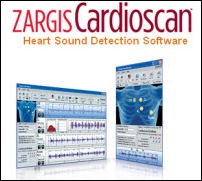




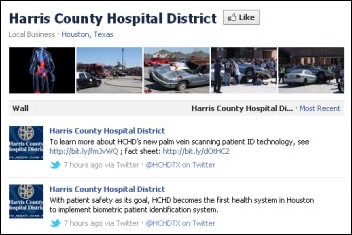
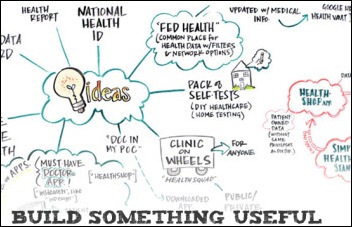







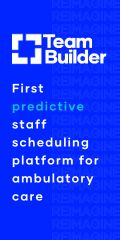



























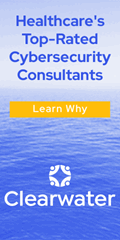



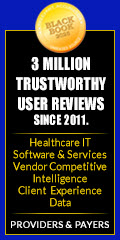
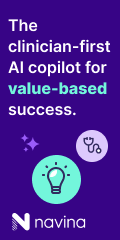




















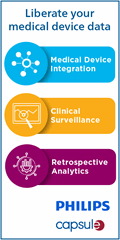
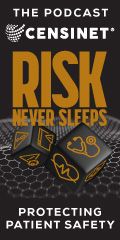









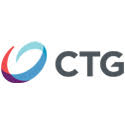
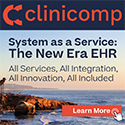

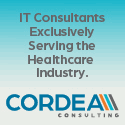


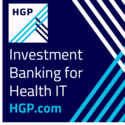





Would have liked to have seen more about Expanse here. Would like to see more about it on this site…